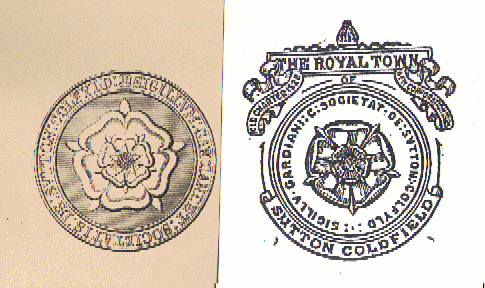At their meeting of 29th September 1943 the Corporation of Sutton decided on a rate for the next six months, and so that everyone would know that the notice was official it was resolved “that the Common Seal of the Council be affixed thereto”.
The use of seals to authenticate documents goes back to ancient times - they were used in Greece and Rome, the seal being created by pressing the master onto soft wax or metal. Kings of England had their particular seals, usually showing an image of the monarch or his armorial bearings - a seal of King Henry VIII is still attached to the Charter of 1528 which made Sutton a royal town.
In medieval times every gentleman had his own seal to safeguard his letters and certify his documents - the seal had a higher validity that a signature. Henry de Bereford, of Sutton’s Langley Hall family used his seal on a document in 1327, but, fearing that his seal was not widely recognised, he asked his nephew Roger Hillary to affix his seal as well. Documents were still being “signed sealed and delivered” in the seventeenth century; the illustration shows a deed of 1661 signed by Thomas Fox on a strip of parchment threaded through, the ends secured by a lump of red sealing wax stamped with his seal which Fox had applied with his signet ring (too small to show up in the photo).
The seal in use by Sutton Corporation from the sixteenth century was about the size of a £2 coin, consisting of a Tudor rose encircled by an inscription. Sutton received a new Charter in 1885, and at the first meeting of the new Mayor and Corporation on 6th April 1886 “a deputation from the old Corporation of Sutton Coldfield having been introduced to the Council the Warden, Henry Duncalfe Esq., on their behalf presented to the Mayor the old charters and also the key and possession of the town hall, corporate seal and mace.”
The new charter authorised the Borough Council to have “a common seal and may assume armorial bearings”. The minutes of the first meeting continue “It was resolved that the Ancient Seal of the Corporation be adopted as the Common Seal of the Mayor Aldermen and Burgesses of the Borough of Sutton Coldfield with such modifications if any as may be required by the College of Arms”. The new Common Seal (as affixed to the notice in 1943) was the old one with the addition of a bishop’s mitre and the words “The Royal Town of Sutton Coldfield old charter 1528 new corporation 1885”

